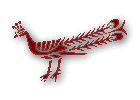 |
|
| ISSN 1084-7553 | |
| IJTS Vol. 3, No. 1 August 1998 |
|
| Editorial Note | |
| Gopinath Kaviraj... | |
| Computer Space | |
| Book Review | |
| New Titles | |
| - Il Monoteismo... | |
| - Rta-Ritu... | |
| - Aforismi... | |
| - Brahmins of Nepal... | |
| - Mongolian Portrait... | |
| News | |
| Support The IJTS |
|
|
|
|
| Search |
|
| Register |
|
| Create Your Profile | |
| Recover Password | |
| Log In |
|
| Institutional Sub |
|
| none | |
How To Collect, Organize, And Manage Them
An Interview to T. Matthew Ciolek |
|
1) What do you do and how you relate to the topic of this interview? What a deceivingly simple question ! At one level, it teases out a formulaic answer. For instance, "I am a scholar turned computer programmer and I build online information systems", or, "I collect, organize and manage online information about Asian Studies". Yes, I could say that this is what I do. In a certain sense, I could be described as an architect, and manager of networked knowledge. Yet, at another level, I do not know what I really do. In fact, no one working with the Internet really knows what he or she is doing. We are all innovators and pioneers. Every day we face the unknown and the unexplored. So, to the best of my abilities, I explore and discover. I encounter specific problems, and in response to them I brood, ruminate, and finally conceive a suitable solution. You asked me what I do. Well, I tame and adapt technology to everyday thoughtful uses. I guess I'm like one of the "Aeropostale" aviators of the late 1920s. Following the example of Mermoz, de Saint-Exupery, and Guillaumet I try to loosen the organisational and cognitive constraints on digital practices. I keep trying to find ways of domesticating the electronic frontier. 2) What kind of internet resources are available on Asia? All sort of things. You see, the Internet is like a magnifying glass. It shows all our activities and involvements and blunders in great and embarrassingly clear detail. So, everything which scholars and librarians in Europe, Asia, Australasia and North America have digitised and collated and placed online, is there. Right now, in June 1998, there are no less than 160Gb worth of online documents dealing with Asia and her countries. Moreover, this volume of electronic information continues to grow about 6.5% a month, or 78% a year. So, the Internet is not only full of information (however good or bad it may be), but continues to be packed with it, every day more and more densely. It is filled with a vast range of resources. We can find databases and archives; electronic mailing lists and chat groups; online newspapers and electronic journals and magazines; institutional home pages with corporate information such as addresses, contact numbers, course titles, expertises, publication lists, as well as announcements of seminars, workshops and conferences. Also, there are working papers and numerous scholarly studies. Finally, there are collections of primary documents, e-texts (scanned as text, or as an image) as well as the catalogues, guides and gateways to online information. On the whole, the last category is the most common feature of Asian 'cyberspace'. On the Internet approximately one web page in three is a guide of some kind. And this, of course, is an absolutely surreal situation. Just imagine, for a moment, a library in which 30% of volumes on a shelf are nothing but catalogues and bibliographies of the volumes on that very shelf, including bibliographies of the bibliographies of the bibliographies - ad nauseam... Since time immemorial we have been producing mounds of superfluous, repetitive information, but it is only since the mid-1990s, since the explosion of the WWW that we can see how predictable and un-original we tend to be. So the Internet, in addition to being "the great enabler', 'the great leveller', 'the great democratizer', also turns out to be 'the great simplifier' and 'the great humiliator'. It turns out to be a mirror in which we can observe ourselves, with all warts and beauty spots. And sometimes, when I see myself in that mirror, I get very uncomfortable indeed. 3) Is there any difference between resources for amateurs and for scholars? [This is a preview of the full page; if you are a member of the Asiatica Association and have access to the IJTS, please login using the box on the left menu; non members: please become a member to support the Asiatica Association, and get full access to our publications.] |
|
©1995-2006 Asiatica Association. All Rights Reserved
site development L. Magnocavallo / site comments E. Garzilli |